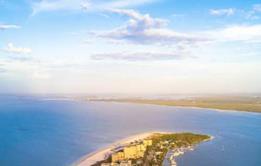Ian could add to the capital pressure faced by ’thinly capitalised’ insurers and see reinsurance rates harden further
Hurricane Ian will be the first test of Florida’s newly-created reinsurance program, a temporary arrangement enacted by lawmakers in an effort to stabilise the state’s troubled property insurance market, according to AM Best.
The Reinsurance to Assist Policyholders program came out of a May special session to provide $2 billion of coverage for hurricane losses to insurers that otherwise might not be able to buy it in the private market.
AM Best states that this reinsurance program will come under pressure if Hurricane Ian hits densely populated areas such as the Tampa/St Petersburg area, where homes are larger and the insured value per home is higher.
“Property insurance in Florida is already a tough market and this impending hurricane looks to make conditions only more demanding,” said Christopher Graham, senior industry analyst, AM Best.
“Reinsurance rates are already increasing and a catastrophic hurricane will likely put more pressure on reinsurers to raise rates.”
$2 billion coverage limit
Insured losses from Hurricane Andrew, which made landfall in 1992 as a Category 5 storm in South Florida, came to $15.5 billion, which in today’s dollars would be approximately $30 billion.
Although the latest track shows Hurricane Ian making landfall south of Tampa, a landfall in the populous area around the city could lead to insured losses as high as those due to Hurricane Andrew.
The reinsurance program’s $2 billion coverage limit is for all participants in aggregate.
There are some important exclusions and limitations, including a limit on loss adjustment expenses to 10% of the reimbursed value—an important limit given that in Florida defense and cost containment expenses alone have been approximately 12% of losses.
Test for poorly-capitalised carriers
Insurers concentrated in Florida, or those writing at least 20% of gross written premium in the state, have been greatly affected by major hurricanes.
The overall property loss ratio for this population spiked to 72% with Hurricane Irma in 2017, and was higher than 60% when Hurricane Michael hit a much less populated area in 2018.
In total, these hurricanes also led to a drop of nearly 20% in policyholders’ surplus, limiting those insurers’ ability to cover future events.
Of the companies writing solely within Florida and writing at least $20 million in premium, more than 80% of that premium is in the homeowners or farmowners line of business. Many of these insurers have a high premium-to-surplus ratio and depend heavily on reinsurance, including the new state-run program.
“Although the reinsurance program provides some capital insulation, it is not expected to make insurers’ programs completely whole, as compared to protection purchased in prior years,” said Chris Draghi, associate director, AM Best.
“In a hardened reinsurance market where capacity and the cost of coverage has been significantly altered, Hurricane Ian could add to the capital pressure faced by those insurers that are thinly capitalised and have not been able to secure appropriate reinsurance.”
Total economic damage from Ian to breach $100 billion, says KCC

Cat modeller predicts high proportion of litigated claims due to ‘tremendous amount’ of coastal flooding
- 1
- 2
- 3
- 4
- 5
- 6
 Currently
reading
Currently
reading
Hurricane Ian will 'test' Florida reinsurance program - AM Best
- 8
- 9
- 10
- 11
- 12

































No comments yet